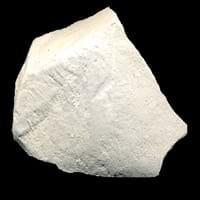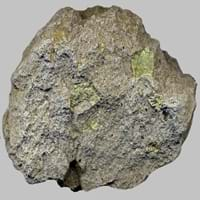Definition
Chalk is a soft, white, powdery limestone consisting mainly of fossil shells of foraminifers
Minette is a variety of Lamprophyre and is porphyritic alkaline igneous rock which is mainly dominated by biotite and potassic feldspar
Discoverer
Unknown
Unknown
Etymology
From old English cealc chalk, lime, plaster; pebble, from Greek khalix small pebble, in English transferred to the opaque, white, soft limestone
From French mine ore, mine + ette
Class
Sedimentary Rocks
Igneous Rocks
Sub-Class
Durable Rock, Soft Rock
Durable Rock, Medium Hardness Rock
Group
Not Applicable
Plutonic
Other Categories
Fine Grained Rock, Opaque Rock
Coarse Grained Rock, Fine Grained Rock, Opaque Rock
Texture
Clastic or Non-Clastic
Porphyritic
Color
Grey, White, Yellow
Black, Bluish - Grey, Brown, Dark Greenish - Grey, Green, Grey
Durability
Durable
Durable
Appearance
Soft
Dull, Banded and Foilated
Interior Uses
Decorative Aggregates, Homes, Interior Decoration
Countertops, Decorative Aggregates, Interior Decoration
Exterior Uses
As Building Stone, As Facing Stone, Paving Stone, Garden Decoration
As Building Stone, As Facing Stone, Garden Decoration
Other Architectural Uses
Powder
Curbing
Construction Industry
As Dimension Stone, Cement Manufacture, Construction Aggregate, for Road Aggregate, Making natural cement, raw material for manufacture of quicklime and slaked lime, Source of calcium
As Dimension Stone, Cement Manufacture, for Road Aggregate, Making natural cement, Manufacture of Magnesium and Dolomite Refractories
Medical Industry
Not Yet Used
Taken as a Supplement for Calcium or Magnesium
Antiquity Uses
Artifacts, Monuments, Sculpture, Small Figurines
Artifacts, Monuments, Sculpture, Small Figurines
Commercial Uses
Alumina Refineries, Creating Artwork, Drawing on blackboards, Gymnasts, athletes and mountain climbers use for grip, In aquifers, Paper Industry, Production of Lime, Raw material for manufacture of quicklime, slaked lime, Soil Conditioner, Whiting, Whiting material in toothpaste, paint and paper
An Oil and Gas Reservoir, As a Feed Additive for Livestock, Gemstone, Metallurgical Flux, Production of Lime, Soil Conditioner, Source of Magnesia (MgO)
Types
Not Available
Minette, Alnoite, Camptonite, Monchiquite, Fourchite, Vogesite, Appinite and Spessartite
Features
Clasts are smooth to touch, Is one of the oldest rock, Smooth to touch, Very fine grained rock
Always found as volcanic pipes over deep continental crust, Host rock for Diamond, Is one of the oldest rock, Surfaces are often shiny
Archaeological Significance
Famous Monuments
Data Not Available
Data Not Available
Famous Sculptures
Data Not Available
Data Not Available
Formation
Chalk is formed from lime mud, which accumulates on the sea floor which is then transformed into rock by geological processes.
Minette formation takes place deep beneath the Earth’s surface at around 150 to 450 kms, and are erupted rapidly and violently.
Mineral Content
Calcite, Clay, Clay Minerals, Quartz, Sand
Amphibole, Carbonate, Garnet, Micas, Olivine, Phlogopite, Pyroxene
Compound Content
Ca, NaCl, CaO
Aluminium Oxide, NaCl, CaO, Iron(III) Oxide, FeO, Potassium Oxide, MgO, MnO, Sodium Oxide, Silicon Dioxide, Titanium Dioxide
Types of Metamorphism
Not Applicable
Burial Metamorphism, Cataclastic Metamorphism, Contact Metamorphism, Hydrothermal Metamorphism, Impact Metamorphism, Regional Metamorphism
Types of Weathering
Biological Weathering, Chemical Weathering
Biological Weathering, Chemical Weathering
Types of Erosion
Chemical Erosion, Coastal Erosion, Water Erosion
Chemical Erosion, Coastal Erosion, Sea Erosion, Wind Erosion
Grain Size
Very fine-grained
Fine to Coarse Grained
Fracture
Not Available
Conchoidal
Porosity
Highly Porous
Very Less Porous
Luster
Dull
Subvitreous to Dull
Cleavage
Non-Existent
Conchoidal
Toughness
1
Not Available
Specific Gravity
2.3-2.4
2.86-2.87
Transparency
Opaque
Translucent to Opaque
Density
2.49-2.50 g/cm3
2.95-2.96 g/cm3
Specific Heat Capacity
Not Available
Resistance
Heat Resistant
Heat Resistant, Impact Resistant
Deposits in Eastern Continents
Asia
Brunei, India, Indonesia, Malaysia, Singapore, Thailand, Vietnam
Russia
Africa
Cameroon, Chad, Ghana, Kenya, Malawi, Sudan, Tanzania, Togo, Zambia, Zimbabwe
Angola, Botswana, Cameroon, Ethiopia, South Africa
Europe
England, France, Germany, Spain, United Kingdom
England, Hungary, Iceland, United Kingdom
Others
Not Yet Found
Antarctica, Greenland
Deposits in Western Continents
North America
Canada, USA
Canada, Mexico, USA
South America
Colombia
Argentina, Colombia, Ecuador
Deposits in Oceania Continent
Australia
Adelaide, New Zealand, Queensland, Tonga, Victoria, Yorke Peninsula
New South Wales, New Zealand, Queensland, South Australia, Western Australia
All about Chalk and Minette Properties
Know all about Chalk and Minette properties here. All properties of rocks are important as they define the type of rock and its application. Chalk belongs to Sedimentary Rocks while Minette belongs to Igneous Rocks.Texture of Chalk is Clastic or Non-Clastic whereas that of Minette is Porphyritic. Chalk appears Soft and Minette appears Dull, Banded and Foilated. The luster of Chalk is dull while that of Minette is subvitreous to dull. Chalk is available in grey, white, yellow colors whereas Minette is available in black, bluish - grey, brown, dark greenish - grey, green, grey colors. The commercial uses of Chalk are alumina refineries, creating artwork, drawing on blackboards, gymnasts, athletes and mountain climbers use for grip, in aquifers, paper industry, production of lime, raw material for manufacture of quicklime, slaked lime, soil conditioner, whiting, whiting material in toothpaste, paint and paper and that of Minette are an oil and gas reservoir, as a feed additive for livestock, gemstone, metallurgical flux, production of lime, soil conditioner, source of magnesia (mgo).









